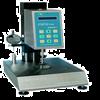Contact Infomation 
Shanghai Nirun Intelligent Technology Co., Ltd
| Tel: | 86-021-58391689 |
| Fax : | |
| Country/Region : |
|
| Address : | |
| Contact : | 周 洪 () |

|










